In February 2017, PEScience launched their TruMulti multivitamin series in both men's and women's versions. This was shortly after the release of their highly-underrated Prolific pre workout supplement, which stole much of the attention.
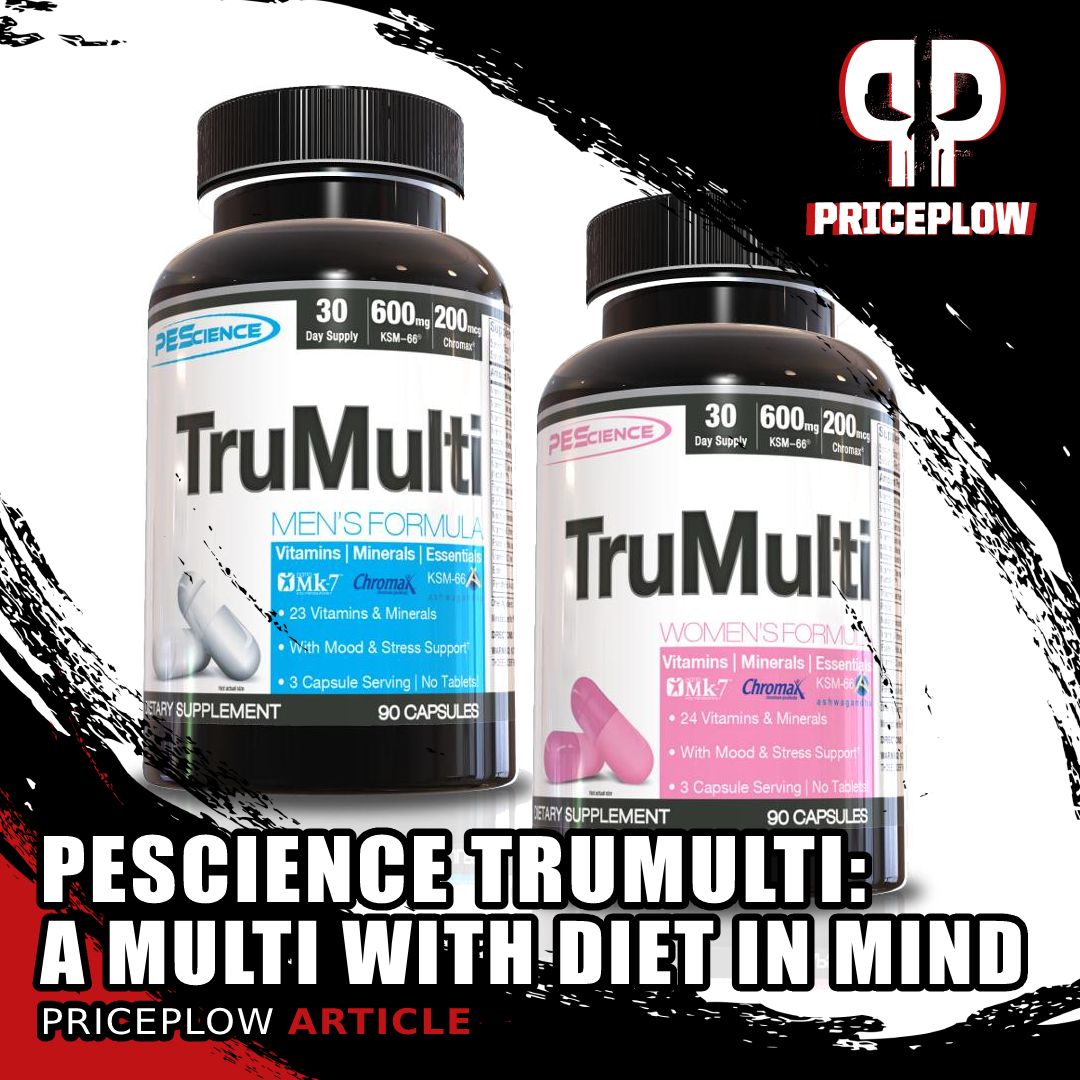
With KSM-66 Ashwagandha and Nutrition21's Chromax Chromium Picolinate, the PEScience TruMulti Series is a multivitamin with diet support in mind
In our recent article covering Nutrition21's Chromax (chromium picolinate) ingredient and its multi-decade legacy, we realized that we missed coverage of TruMulti. Today we dig into the popular multivitamin formula, going into what it has beyond its daily dose of chromium.
The PEScience TruMulti Series: Chromax and a Full Dose of Ashwagandha
The other featured characteristic of both TruMulti Men's and Women's is that they contain a full 600mg dosage of KSM-66 Ashwagandha, the world's most clinically-studied form of the feel-good adaptogen that's been shown to reduce cortisol levels, leading to several benefits discussed below.
With the insulin-sensitivity improving Chromax inside, this is a diet-friendly multivitamin that perfectly aligns with their other popular supplements such as Alphamine.
We get into the research below, but first, check PricePlow's coupon-powered deals and sign up for our PEScience news alerts:
PEScience TruMulti For Men – Deals and Price Drop Alerts
Get Price Alerts
No spam, no scams.
Disclosure: PricePlow relies on pricing from stores with which we have a business relationship. We work hard to keep pricing current, but you may find a better offer.
Posts are sponsored in part by the retailers and/or brands listed on this page.
PEScience TruMulti For Women – Deals and Price Drop Alerts
Get Price Alerts
No spam, no scams.
Disclosure: PricePlow relies on pricing from stores with which we have a business relationship. We work hard to keep pricing current, but you may find a better offer.
Posts are sponsored in part by the retailers and/or brands listed on this page.
This area is reserved for Team PricePlow's upcoming Ingredients video.
Subscribe to our channel and sign up for notifications so you catch it when it goes live!
The following ingredients come in a three capsule serving size, and it's generally recommended you take them all at once with a meal. However, given the dosage of ashwagandha inside, we wouldn't be against reserving one of the capsules before bed, either.
The only difference between TruMulti Men's and TruMulti Women's is that TruMulti Men's does not contain iron, while TruMulti Women's has 18mg.
PEScience TruMulti Ingredients
First, we'll start with the unique ingredients discussed above, and then briefly get into the other "usual" multivitamin ingredients:
-
Ashwagandha Root Extract (KSM-66) - 600mg
TruMulti is enhanced with KSM-66 ashwagandha and Chromax chromium picolinate. Note that the men's version is the same as the women's version here, only without the iron!
One of the key ingredients in TruMulti, KSM-66 ashwagandha, is fully dosed at 600mg, taking up about a third of the entire capsule space in TruMulti. This means PEScience is betting big on the ingredient, and for good reason.
Also known as withania somnifera, ashwagandha is an adaptogenic ingredient that imparts a cortisol-reducing effect, leading to several incredible benefits listed below. KSM-66 contains only the root extract, but is the most clinically-studied form of the plant.
Ashwagandha and Cortisol
Ashwagandha's most potent effect is upon cortisol, and that's backed by several studies.[1,2] In 2012, neuropsychiatrists recruited overstressed adults and found that 600 milligrams of ashwagandha per day led to 28% lower cortisol levels.[1]
Similarly, another study pitted 500mg ashwagandha against 250mg, 125mg, and placebo, and saw that the group that took 500mg (in two separate doses of 250mg each day) had a 30% decrease in cortisol.[2]
We don't want to eliminate cortisol completely, but having chronically high levels are detrimental for mental and physical health, and can disaffect your ability to gain muscle and burn fat.
Ashwagandha as a Performance Booster
The cortisol reduction effects lead into other areas as well. In 2015, researchers gave 600mg ashwagandha or placebo to 57 healthy young adult males. After eight weeks, they found that ashwagandha increased testosterone by 15%![3]
On top of that, the men also gained strength, muscle mass, and experienced better recovery. The researchers of that study discovered improved bench press and leg extension strength alongside better muscle growth in the chest and arms. These individuals reported less exercise-induced muscle damage, a sign of better recovery.
Aside from testosterone, other studies have shown that large doses may improve infertility as well.[4]
Ashwagandha for dieters
Adaptogens like ashwagandha go both ways - it's not just for men trying to make "gains", but also for dieters trying to lose weight. A study performed by the Indian Red Cross found that dieters taking ashwagandha experienced twice the decrease in body mass compared to placebo.[5]
Attacking anxiety
The cortisol reduction may also improve stress and anxiety levels, ultimately improving quality of life, as demonstrated by several studies.[1,2,6] Animal models show that it may work by regulating GABAergic signaling,[7] a central nervous system pathway that's critical in terms of "getting stressed", which ashwagandha seems to be able to block or at least mitigate.
Ultimately, this is a great ingredient to include in a multivitamin that somewhat "forces" users to get in on a daily basis, and PEScience's big bet on the ingredient is a wise one. You don't use a third of your capsule space on something with minimal effects.
-
Chromax Chromium (as chromium picolinate) - 200mcg
For over 25 years, Chromax chromium picolinate has been improving insulin sensitivity. We argue that it's only gotten better, as dietary deficiencies have gotten worse over this time period.
The other ingredient highlighted in the intro is Chromax branded chromium picolinate.
The key to chromium supplementation is to realize its fight against insulin resistance, especially in those who are plagued by metabolic woes. Insulin resistance has plagued a greater percentage of Westerners than ever before,[8] as our foods have become far less nutrient-dense.
We argue that one (of several) essential minerals lacking in our food supply is chromium, and this is important because chromium can improve insulin signaling and secretion,[9-11] helping the body process carbohydrates more effectively. With that mechanism in mind, here are some researched-backed areas where chromium picolinate (and thus Chromax) can help:
Improved blood glucose and insulin sensitivity in insulin resistant dieters
Studies show that Chromax is effective at reducing appetite, which helps promote weight loss. Image courtesy of Nutrition21.
In 2014, researchers published a review analyzing 25 studies that used either chromium or chromium picolinate in efforts to fight insulin resistance. They concluded that chromium supplements significantly improve blood glucose levels[12] and that the strongest effects came from chromium picolinate![12] This has been repeated by other studies,[13] who also theorized that the picolinate version works better because of its bioavailability.[13]
If not insulin resistant, there are still short-term effects. For instance, in a 16 week, double-blinded, placebo-controlled trial, chromium picolinate didn't modify A1c or blood lipid levels in healthy individuals, but it did facilitate acute blood sugar and insulin responses.[14]
At higher doses (600mcg and 1000mcg) than what we have in TruMulti (200mcg), we may even see reduced cravings and appetite, as shown by two different studies.[15,16] Interestingly, one of these studies found reduced cravings for fatty foods[15] while the other saw reduced carbohydrate cravings.[16] Either way, increasing protein is always a good idea, and PEScience makes that easy with their Select Protein and Vegan Select Protein powders.
Chromium's weight loss research
When it comes to weight loss, the results in chromium are mixed. A meta analysis showed weight loss after three months of supplementation,[17] but we've also seen no change to BMI.[16] However, much of the research is confounded by resistance training, which adds muscle mass (and insulin sensitivity improvements from chromium will help in that case), and recall that muscle is more dense than fat.
So when it comes to body composition, which is more important, there have been successful studies using 200mcg and 400mcg of chromium.[18,19]
Other chromium benefits - avoid deficiency!
Chromium has been shown to significantly improve body composition when paired with a sufficient exercise and diet regimen. Image courtesy of Nutrition 21.
There may also be benefits in terms of heart disease risk,[20] since those with low chromium levels are at greater risk of heart disease.[21] In addition, chromium increases insulin sensitivity within the hypothalamus, and there may be upregulated serotonin levels![22,23]
In general, the point is to avoid being chromium deficient, and 200mcg of Chromax added to your PEScience TruMulti is the easiest way to insure against that.
You can read more in our article titled Chromium Picolinate: The Ultimate Trace Mineral For Insulin Sensitivity.
-
Chelated Minerals (Magnesium, Molybdenum, Zinc, and Iron [in TruMulti Women's)
We've long been proponents of chelated minerals, which mean they've been bound to amino acids that are easier for the small intestine to absorb. In this case, we have chelated magnesium, molybdenum, and zinc, all in the aspartate form, which means that the minerals are bound to the amino acid aspartic acid.
The issue with minerals is that they're not easily absorbed in their raw form, and definitely not absorbed in the oxide form that we often see in lower-cost supplements and multivitamins.
However, our bodies are great at absorbing amino acids. So the idea is that of a "Trojan Horse": bind the minerals to an easily-absorbed amino acid, get the intestine to take it into the bloodstream, and then allow it to get broken down into the minerals that we need.
These chelated forms are consistently shown to have higher bioavailability,[24,25] getting more of the mineral into the bloodstream and thus the organs that need them.
-
Vitamin E Blend Rich in Tocopherols and Tocotrienols
PEScience uses a unique blend of Vitamin E that includes several tocopherols and tocotrienols. We're looking to avoid deficiency here, and getting as many of these "vitamers" in a multivitamin is important because nobody knows what your diet may be lacking.
Research on Vitamin E has generally found that it helps immunity and various immune system biomarkers.[26-30]
-
Vitamin K2 - 120mcg (100% DV)
Too many multivitamins don't contain Vitamin K, which is a shame since it plays a major role in bone health[31-34] and blood clotting,[35] and may even increase insulin sensitivity[36] (a nice companion to the Chromax).
PEScience stays away from cheaper forms like K1 and goes with a premium form of vitamin K2, NattoMK7 (MK7 stands for menaquinone-7), which is naturally found in animal sources and is of higher bioavailability.
-
Other vitamins and minerals
PEScience brings another fresh flavor to its pre workout lineup - Strawberry Kiwi Prolific and High Volume!
The rest of the TruMulti series includes your "standard" mixture of vitamins and minerals, including Vitamin A, B Vitamins, Vitamin C, Vitamin D, folate from folic acid, biotin, copper, calcium, iodine, and more.
A few things worth pointing out are the inclusion of vanadium as vanadyl sulfate, which could also provide further insulin signaling support and boron, which is often in hormone support supplements. Lastly, we're happy to see Vitamin B12 as methylcobalamin, which we always prefer over cyanocobalamin.
Again, recall that iron is only in the Women's version - the rest is all the same.
TruMulti Takes a Diet-Friendly Approach with Chromium and Ashwagandha
It's not surprising to see the brand behind Alphamine, Alphamine Capsules, and Lipovate take a diet-driven approach to their multivitamin. The combination of cortisol reduction (from KSM-66 ashwagandha) and insulin sensitivity (from Chromax) is a perfect companion to the supplements listed above.
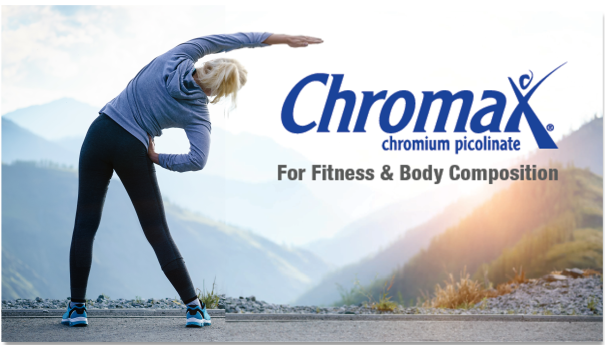
Chromax is the industry's most trusted and tested form of chromium picolinate, helping users stay insulin sensitive for decades
We've consistently harped on the fact that our food supply has become deficient in so many vitamins and minerals that it's tough to keep track of all of them. Our land has been overfarmed, our soil is barren, and our food is less nutrient-dense than ever before. In a perfect world, we wouldn't need to be here, but that's not reality. For that reason, we suggest supplements to cover our dietary mineral gaps, and multivitamins are the best ways to do it.
We've followed PEScience for a long time (look only to our 2014 review of Select Protein), but only now realized that their multivitamin contained our preferred chromium supplement. So get your TruMulti in, enjoy the ashwagandha anti-cortisol effect, and get your 200mcg of Chromax in so you can get on with your busy day.
PEScience TruMulti For Men – Deals and Price Drop Alerts
Get Price Alerts
No spam, no scams.
Disclosure: PricePlow relies on pricing from stores with which we have a business relationship. We work hard to keep pricing current, but you may find a better offer.
Posts are sponsored in part by the retailers and/or brands listed on this page.
PEScience TruMulti For Women – Deals and Price Drop Alerts
Get Price Alerts
No spam, no scams.
Disclosure: PricePlow relies on pricing from stores with which we have a business relationship. We work hard to keep pricing current, but you may find a better offer.
Posts are sponsored in part by the retailers and/or brands listed on this page.


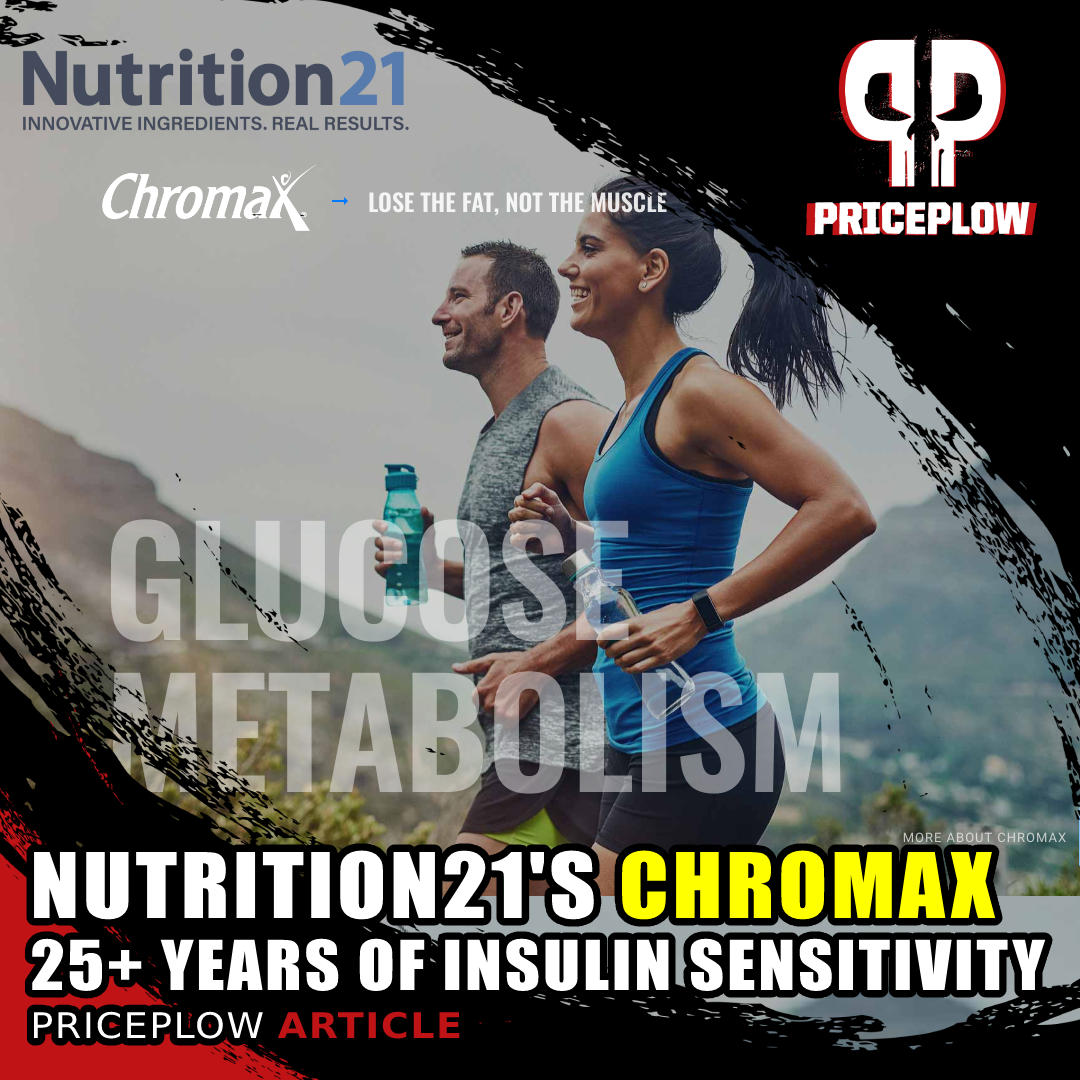
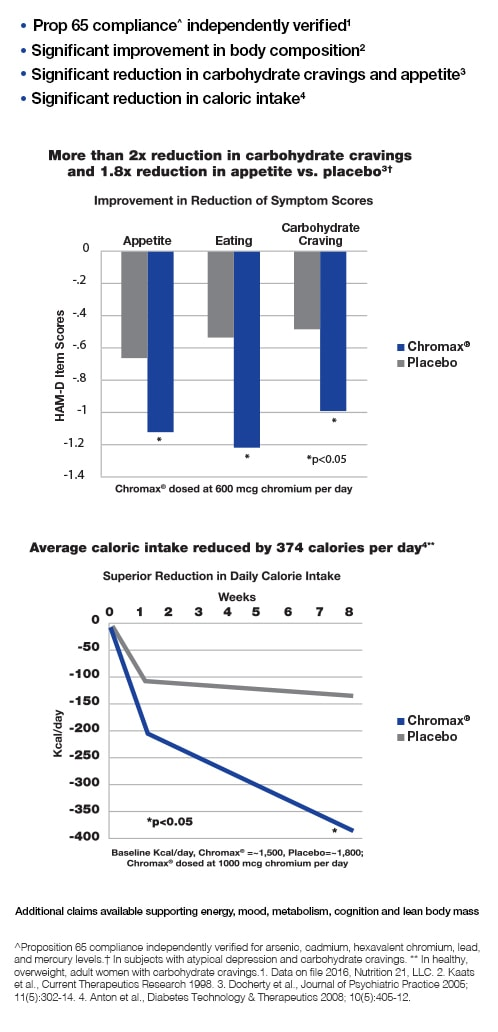

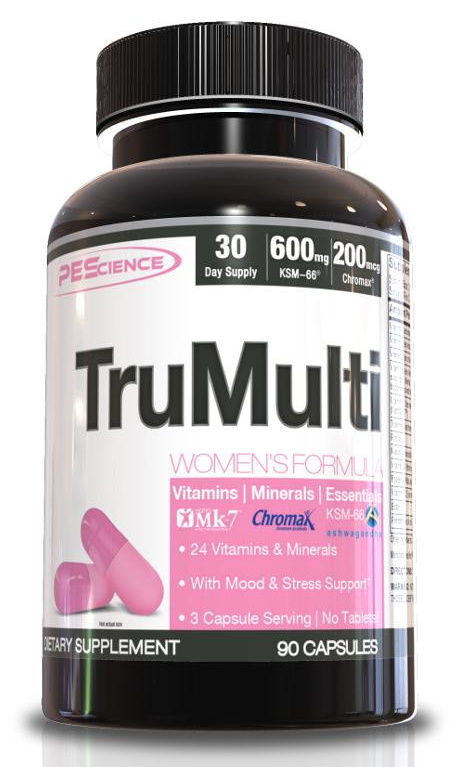

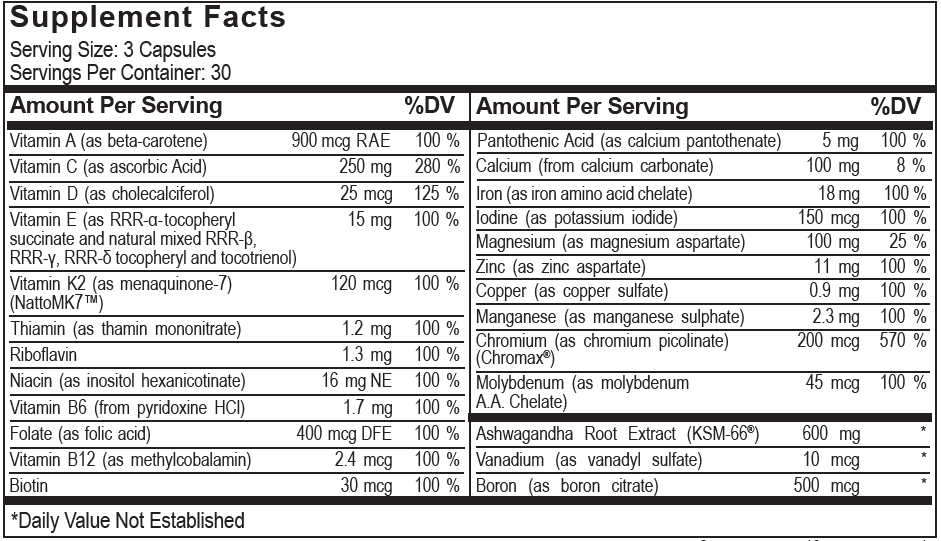


Comments and Discussion (Powered by the PricePlow Forum)